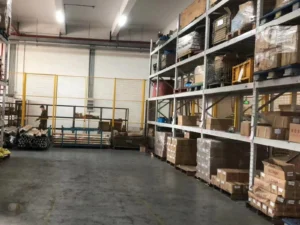Elevator parts serve as the backbone of vertical transportation systems, ensuring smooth and reliable movement within buildings. Engineers play a crucial role in designing and manufacturing these parts to withstand rigorous usage and environmental conditions. In this article, we delve into the strategies and technologies employed by engineers to ensure the durability of elevator parts, guaranteeing safe and efficient operations for years to come.
To begin with, engineers focus on selecting high-quality materials for constructing elevator parts. Components such as traction systems, hoists, cables, and safety mechanisms must withstand constant stress and strain. High-grade steel alloys, reinforced plastics, and advanced composites are commonly used materials due to their strength, corrosion resistance, and longevity. By utilizing these materials, engineers create elevator parts capable of enduring the demanding conditions of daily use.
Furthermore, engineers employ rigorous testing procedures to validate the durability of elevator parts before installation. Various simulations, including stress tests, load tests, and endurance tests, are conducted to assess the performance and structural integrity of components under different scenarios. Through these tests, engineers identify potential weaknesses and fine-tune designs to enhance durability and reliability.
In addition to material selection and testing, engineers implement innovative design features to improve the durability of elevator parts. For instance, the incorporation of redundant safety systems ensures continued operation even in the event of component failure. Moreover, advanced lubrication systems and sealed bearings reduce friction and wear, extending the lifespan of moving parts such as pulleys and rollers.
Regular maintenance and inspection also play a critical role in ensuring the durability of elevator parts. Engineers develop comprehensive maintenance schedules and protocols to detect and address issues before they escalate. Lubrication, alignment adjustments, and component replacements are performed proactively to prevent premature wear and potential failures.
Moreover, engineers leverage advancements in sensor technology and data analytics to monitor the performance of elevator parts in real-time. Sensors embedded within components provide valuable insights into usage patterns, load distribution, and environmental conditions. By analyzing this data, engineers can identify areas for improvement and optimize designs to enhance durability and efficiency.
Furthermore, engineers prioritize sustainability in the design and manufacturing of elevator parts. By employing eco-friendly materials and energy-efficient technologies, they reduce the environmental impact of production processes while ensuring long-term durability and performance.
In conclusion, engineers employ a multifaceted approach to ensure the durability of elevator parts, encompassing material selection, testing, design innovation, maintenance, and sustainability. Through their expertise and dedication, they create elevator systems that deliver safe, reliable, and efficient vertical transportation for buildings of all types. By continually pushing the boundaries of engineering excellence, they uphold the highest standards of quality and durability in elevator parts, meeting the evolving needs of modern architecture and urban infrastructure.


